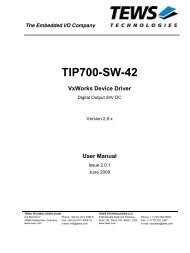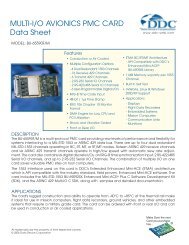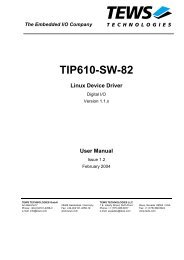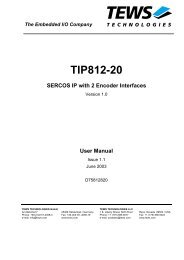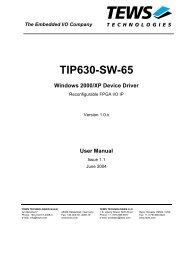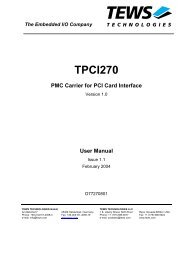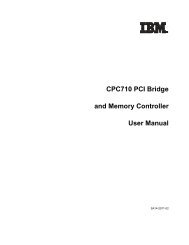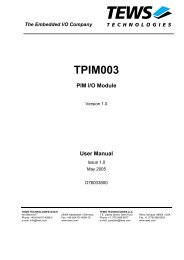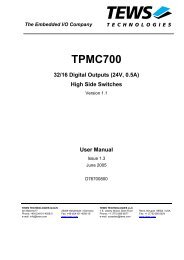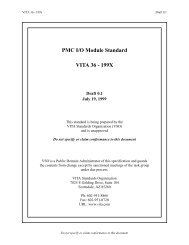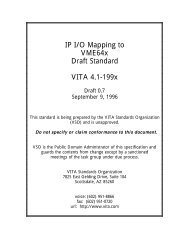MicroTCA TM - PICMG
MicroTCA TM - PICMG
MicroTCA TM - PICMG
You also want an ePaper? Increase the reach of your titles
YUMPU automatically turns print PDFs into web optimized ePapers that Google loves.
Power<br />
Not Intended for Design - Do not Claim Compliance<br />
The Power Subsystem is made up of the following elements:<br />
• power source, which provides energy to the system<br />
• power entry elements, which provide an interface between the power source and the rest of the Power<br />
Subsystem and implement functions such as power line conditioning<br />
• power conversion elements, which take the source energy and provide the required system voltages in a<br />
controlled manner<br />
• distribution elements, including Connectors, Backplane, and power-carrying conductors<br />
• monitoring and telemetry elements<br />
• limiting elements, which protect the loads and distribution system in case of faults<br />
• control elements, managed by the Carrier Manager on a <strong>MicroTCA</strong> Carrier Hub (MCH)<br />
The Power Subsystem incorporates the following functionality:<br />
• provides energy conversion from input sources to 12 V for Payload Power and 3.3 V for Management Power<br />
• provides independent Payload Power distribution branches for up to twelve AdvancedMCs, up to two<br />
MCHs and up to two Cooling Units (note that JSM power is not independent, but typically fed from one of<br />
the MCH branches)<br />
• provides independent Management Power distribution branches for up to twelve AdvancedMCs, up to two<br />
MCHs, up to two Carrier FRU Information Devices and up to two Cooling Units<br />
• provides an interface to the Carrier Manager to permit monitoring of the Power Module status and operation<br />
of the distribution control elements internal to the Power Module<br />
The four most common sources of AC and DC energy are: –48 V DC, –60 V DC, +24 V DC, and Universal AC in<br />
the range of 100–240 V AC. While other sources are possible, they are not currently covered by the <strong>MicroTCA</strong><br />
specification.<br />
The Power Subsystem and the Carrier Manager communicate via IPMB-0. This allows a Carrier Manager to monitor<br />
and control the Power Subsystem.<br />
It is expected that many <strong>MicroTCA</strong> applications will require redundancy in the Power Subsystem, while other<br />
applications will not. The intent of the <strong>MicroTCA</strong> specification is not to require redundancy, but to facilitate<br />
implementation when required.<br />
Because <strong>MicroTCA</strong> is applicable to a broad range of applications and power levels, it is not the intent of this section<br />
to cover all possible implementations and partitioning. Instead, it concentrates on the functionality of the various<br />
elements and required interfaces.<br />
Detailed discussion of one recommended Power Module implementation is included in the full specification. This<br />
covers the case where an “all-in-one” Power Module is intended for inclusion within the same Subrack as<br />
AdvancedMCs and MCH Modules. In addition, up to four of these Modules can be included to implement 3+1<br />
redundancy, for example.<br />
Power architecture<br />
The basic functionality of a DC-powered subsystem is illustrated in Figure 18 below:<br />
<strong>PICMG</strong>® MTCA.0 Short Form Specification, September 21 st , 2006 25 of 34




